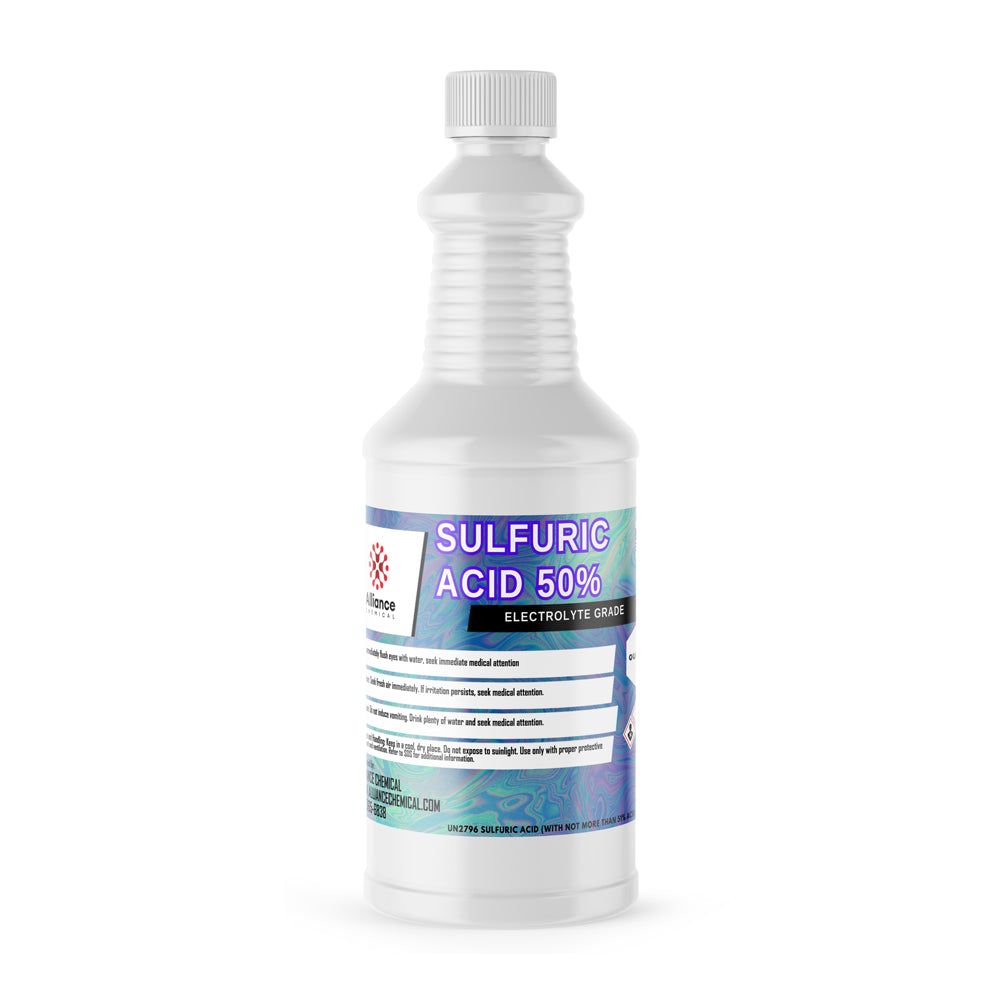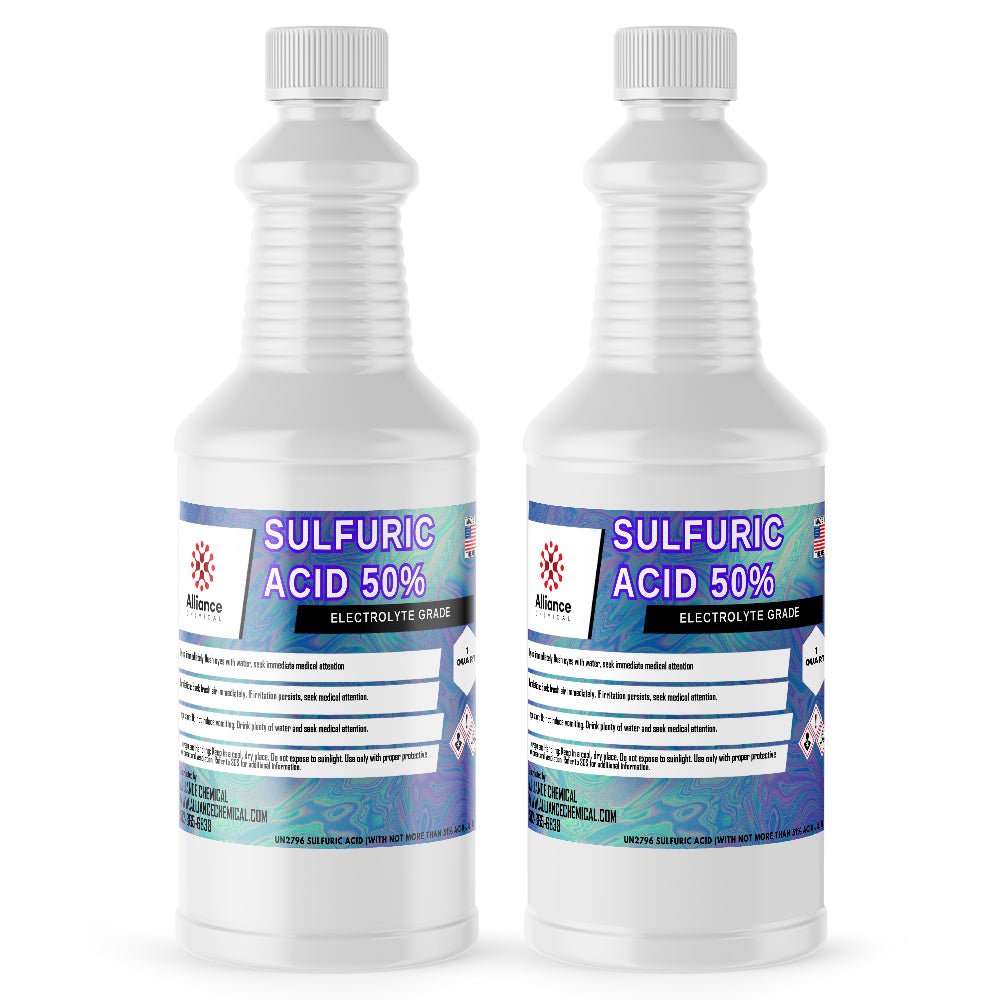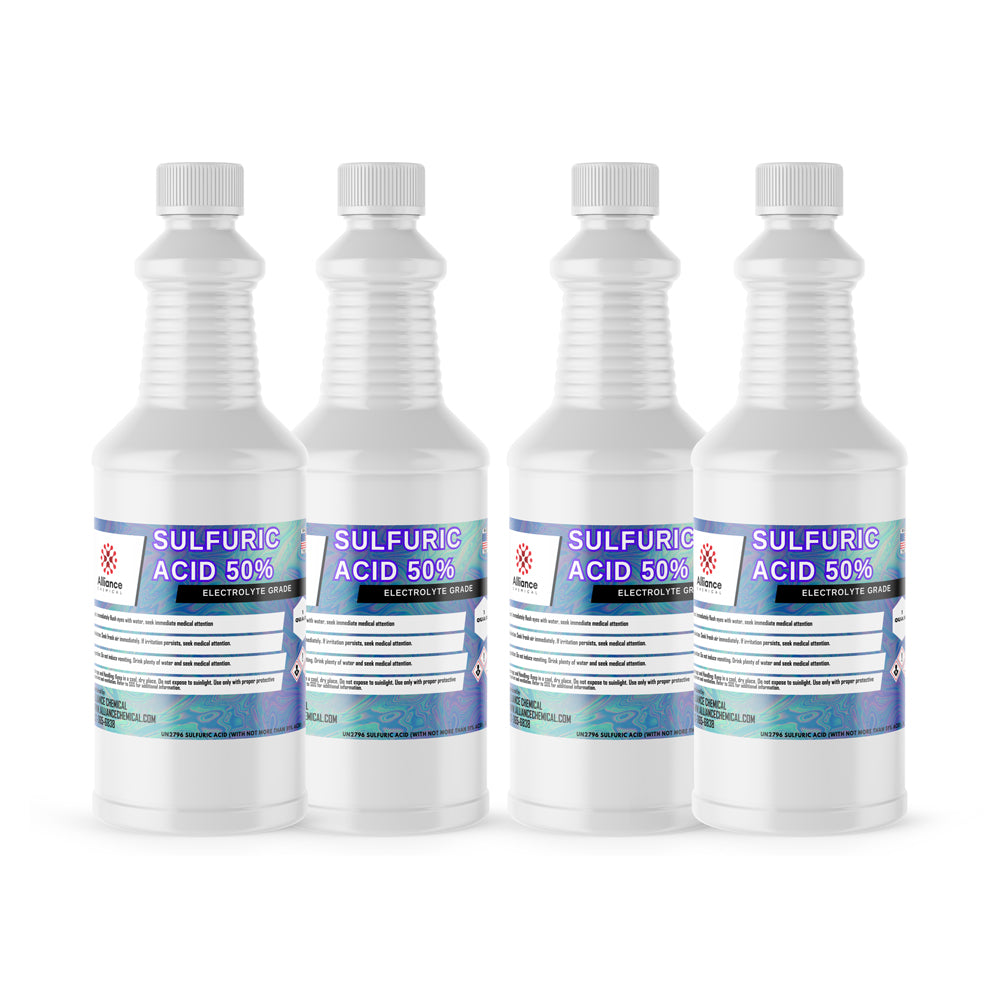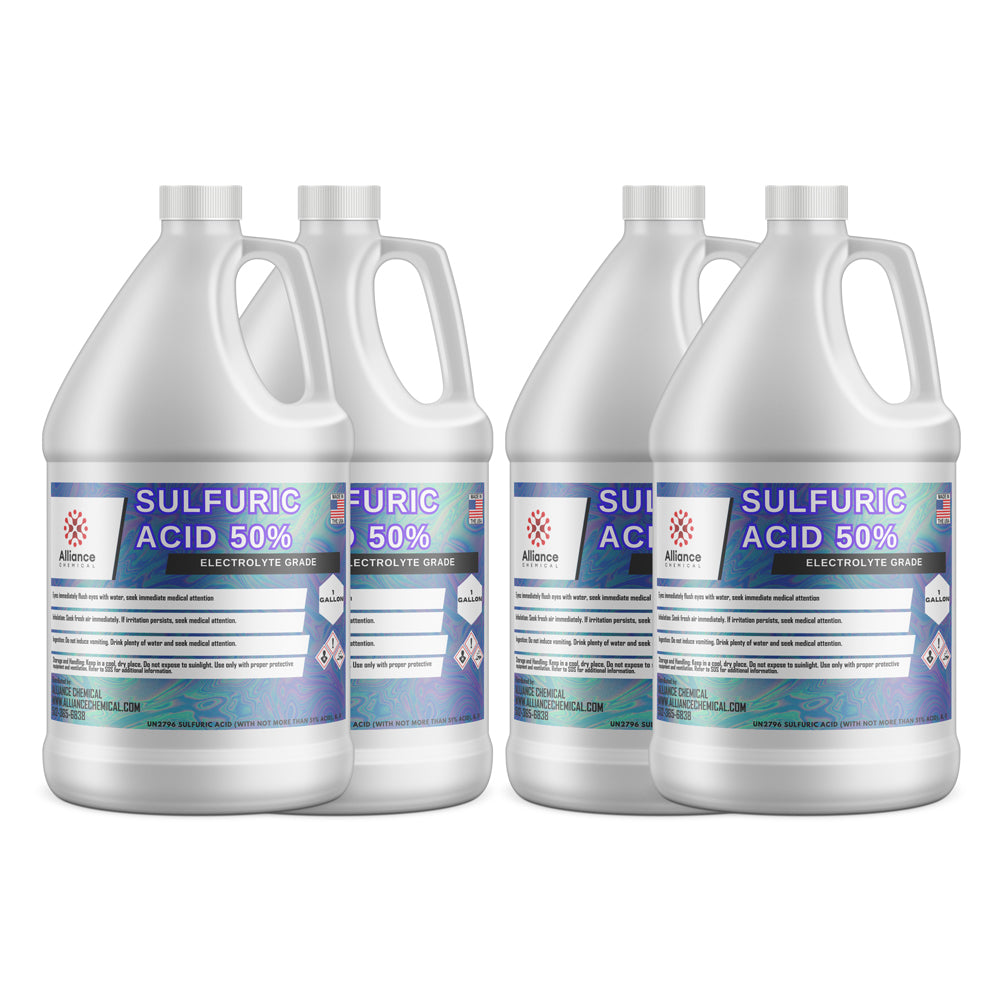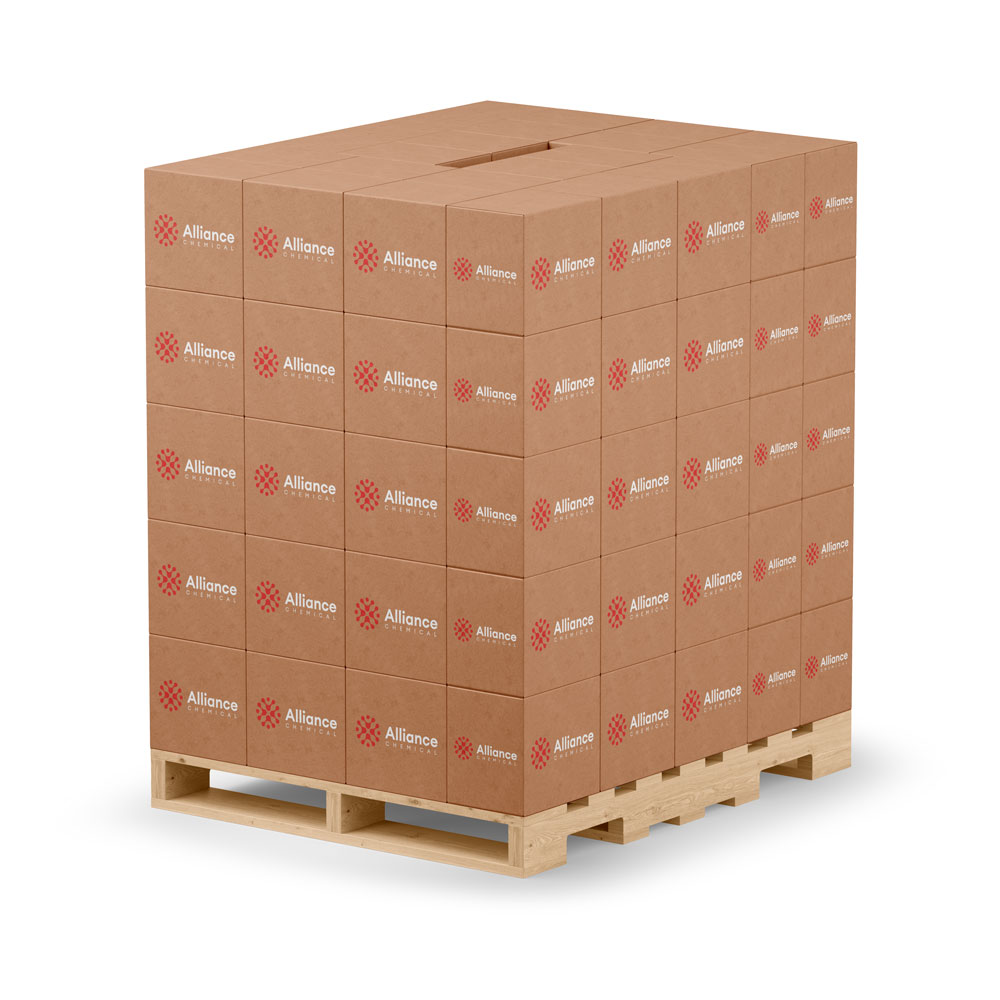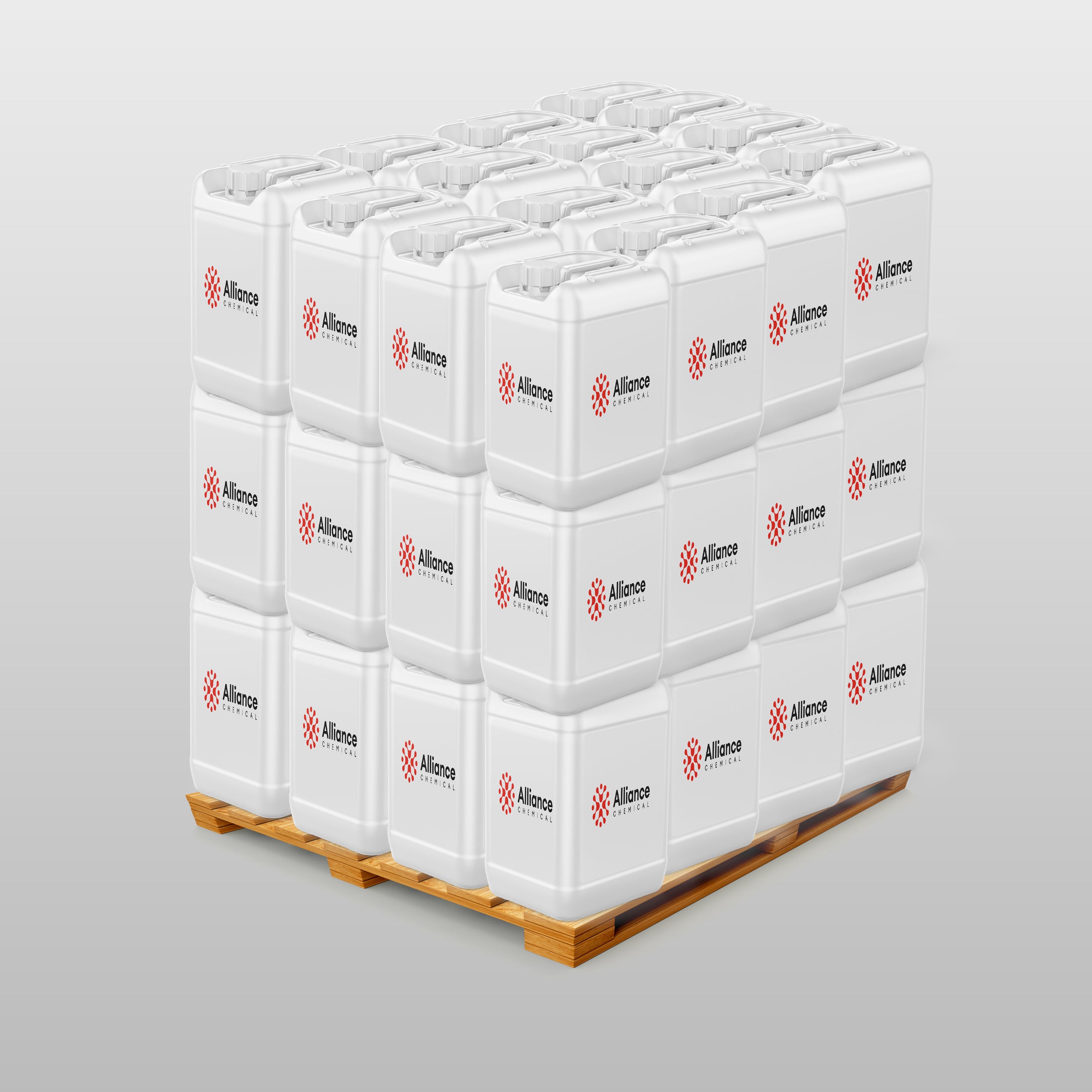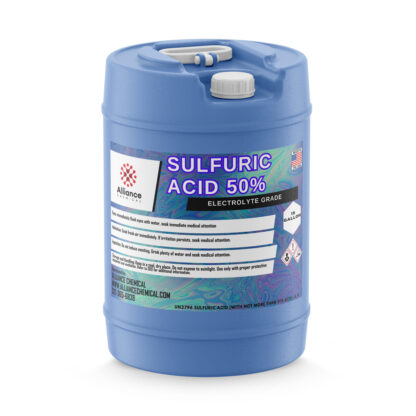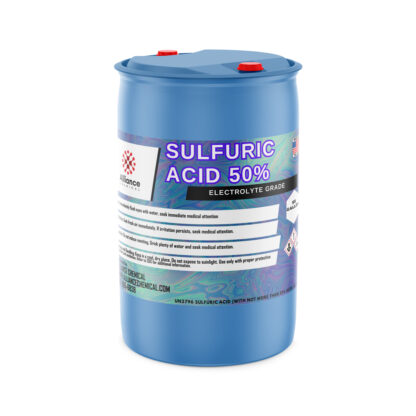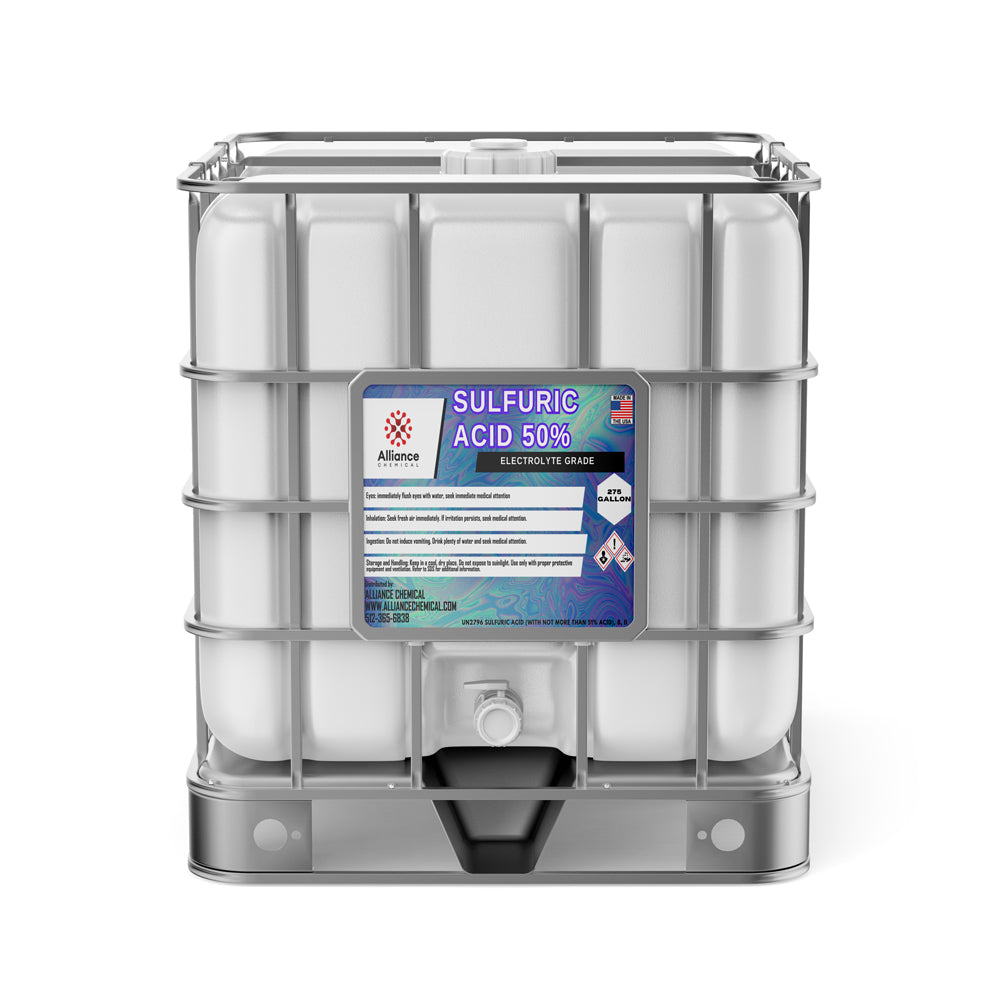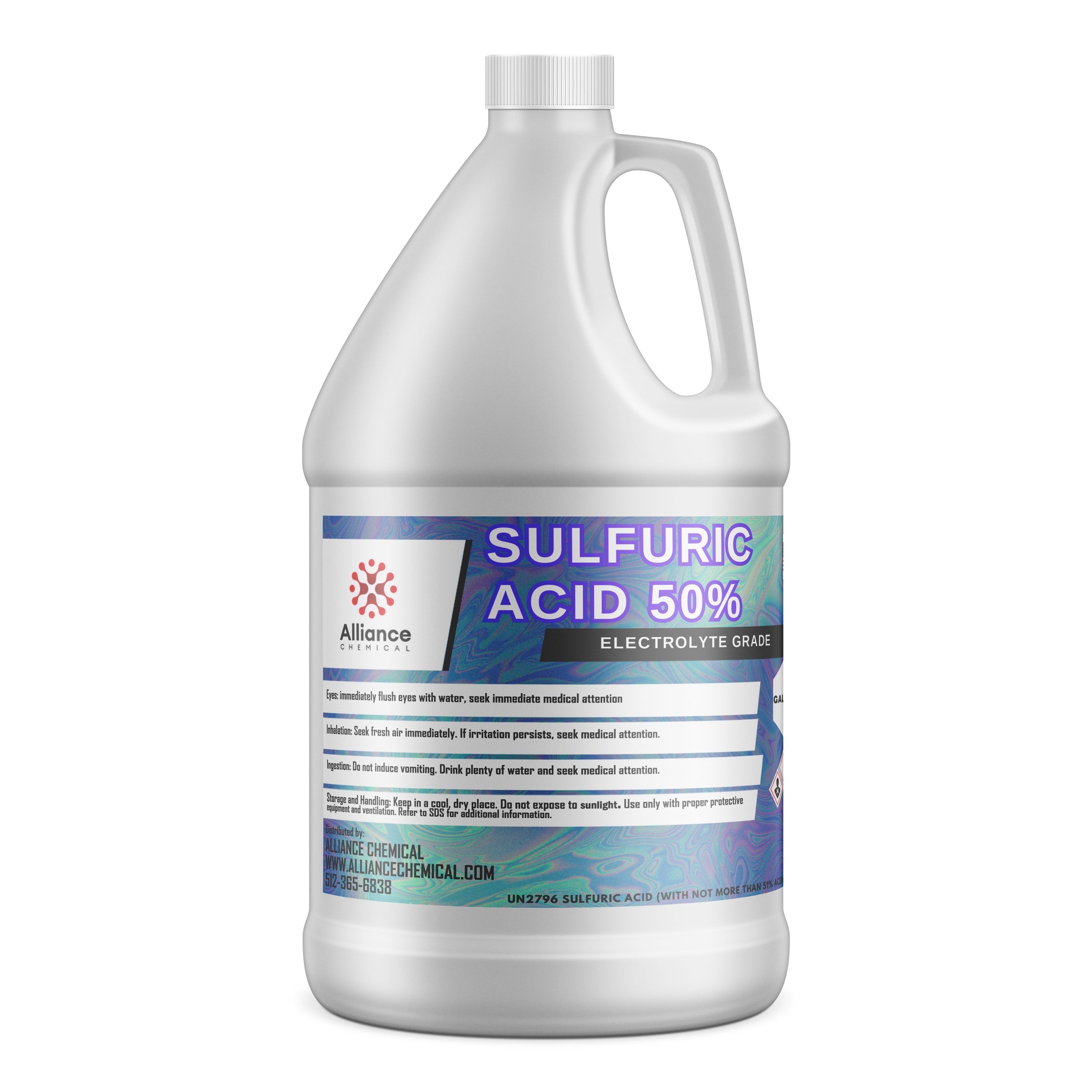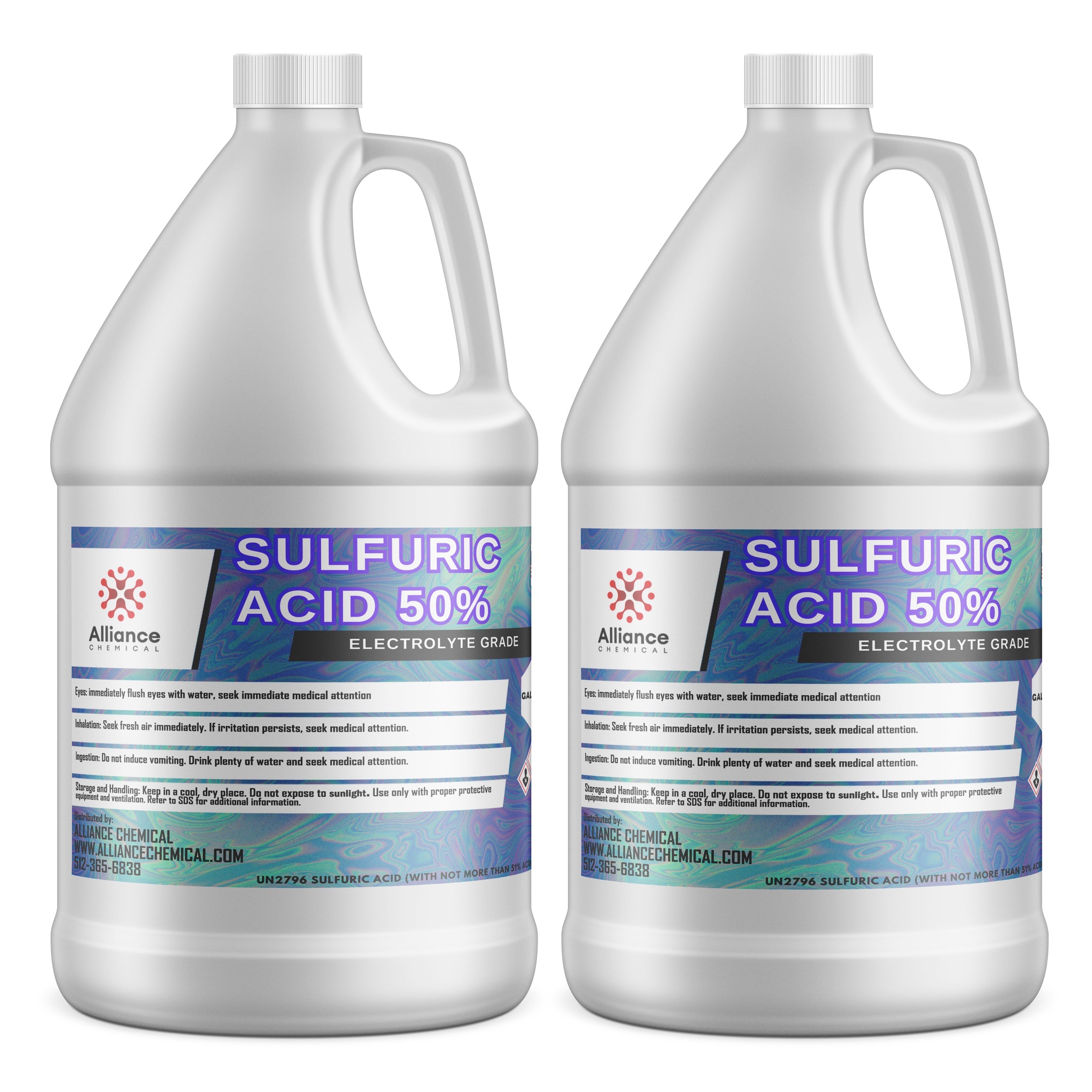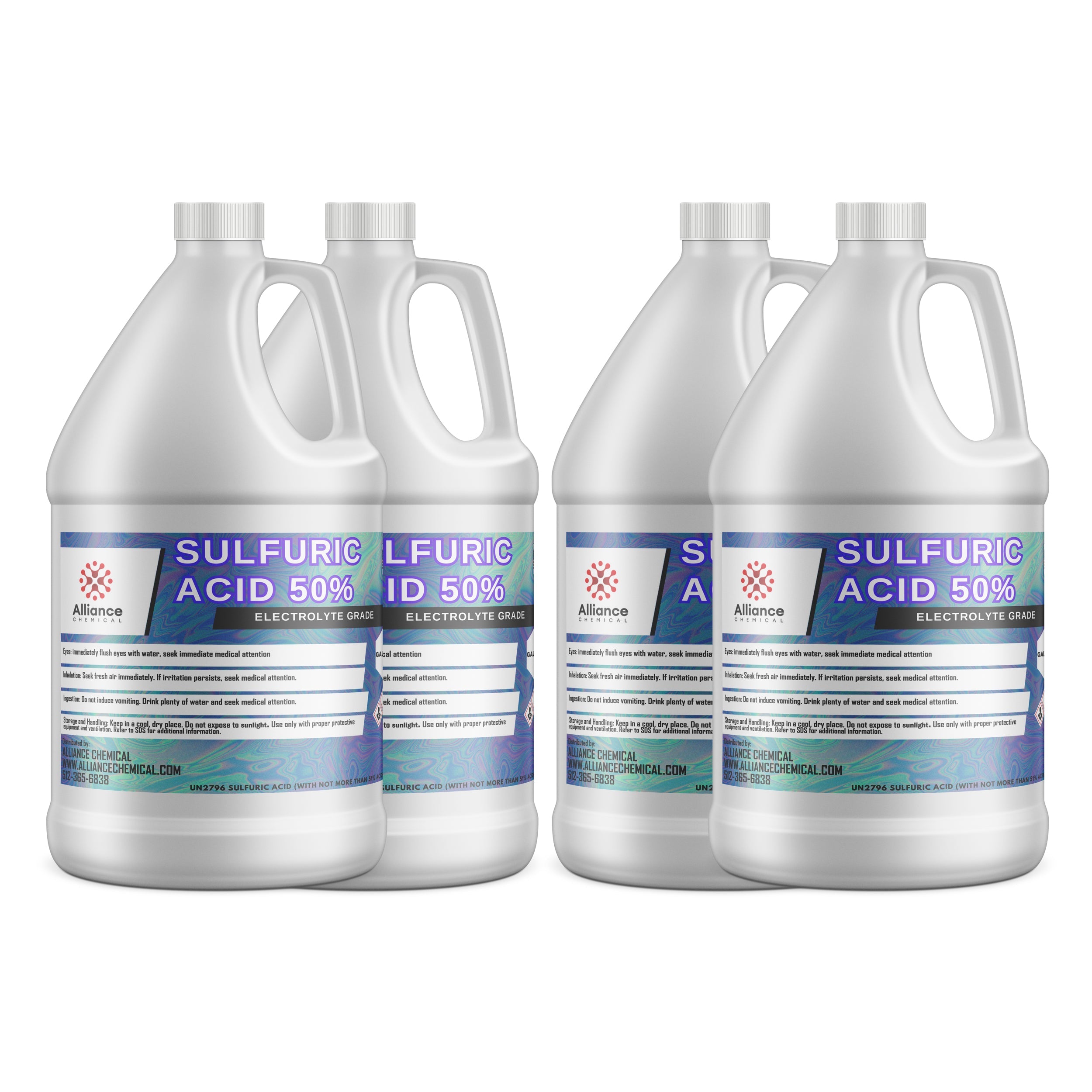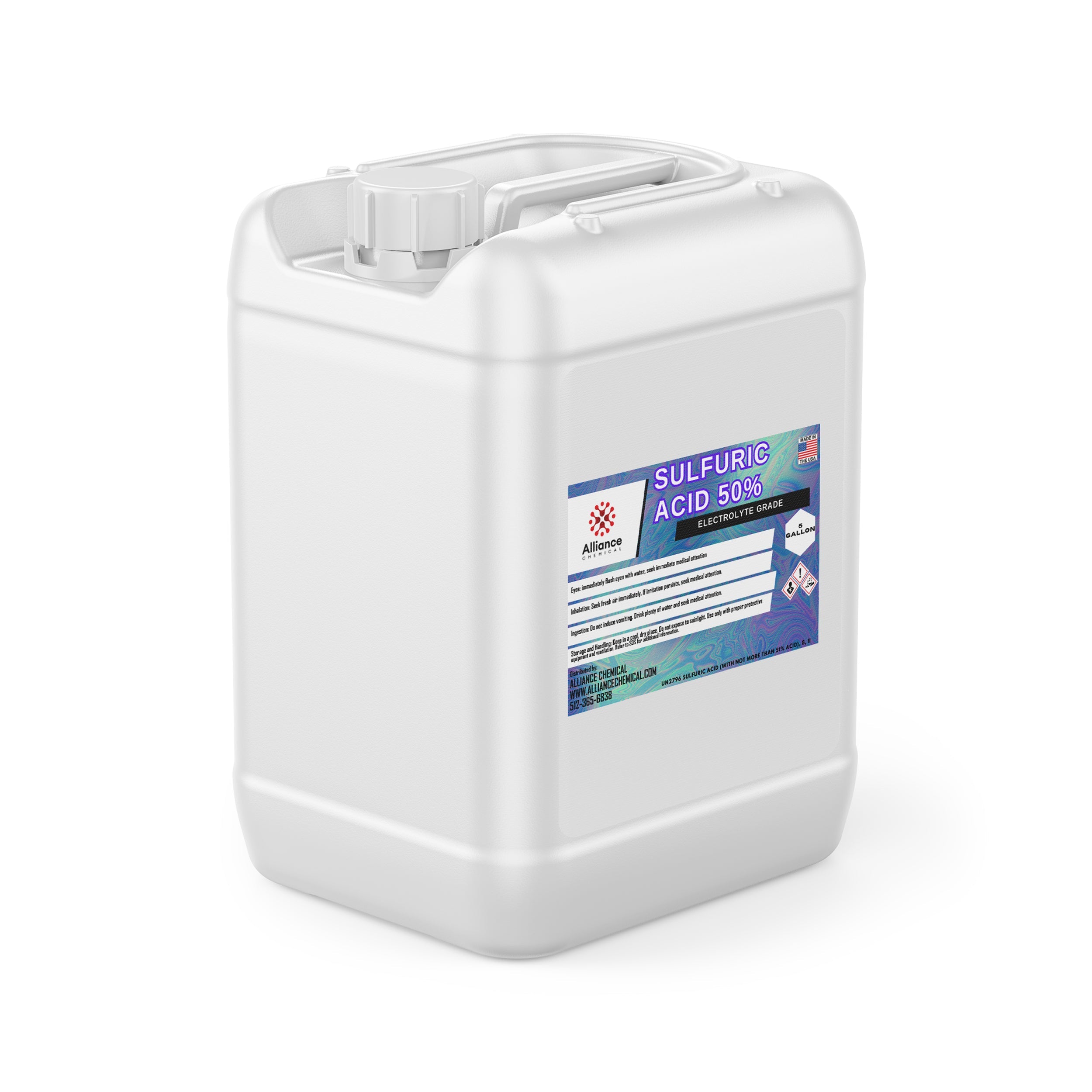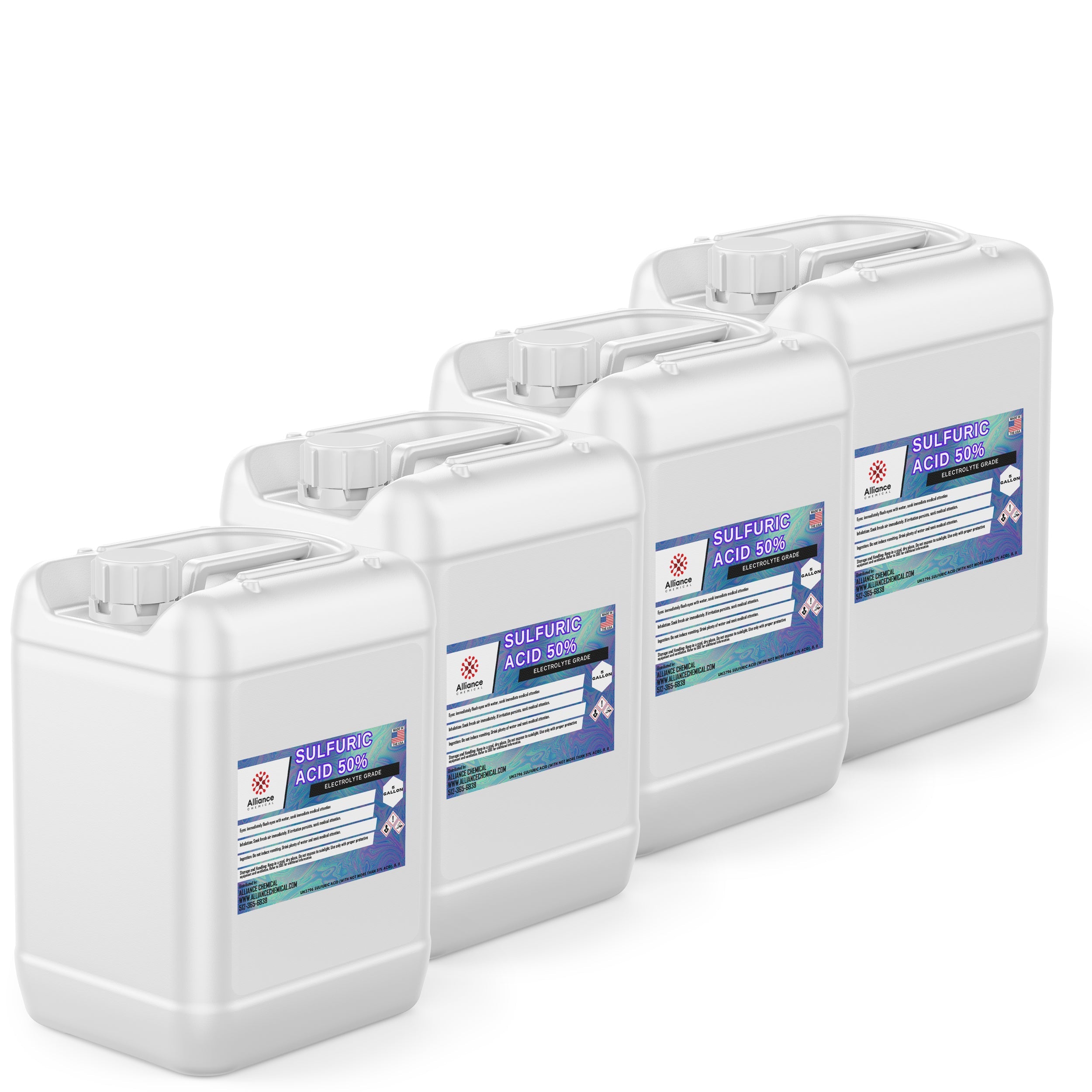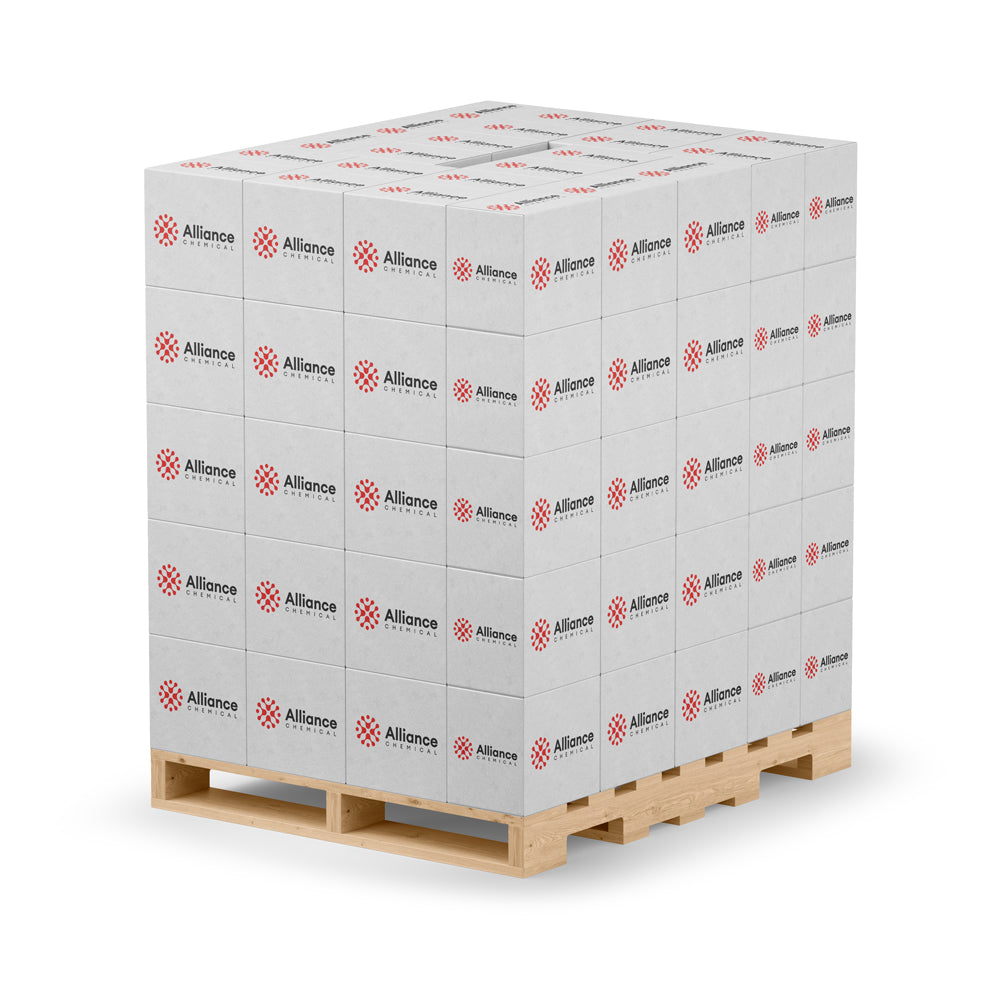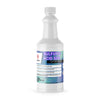Ask a question
Product Overview
Sulfuric Acid 50% - Electrolyte Grade (H₂SO₄, 50% w/w) is a highly corrosive strong acid formulated for electrolyte applications where controlled acidity and conductivity are critical. This grade emphasizes tight specification control to minimize impurities while delivering consistent electrochemical performance in galvanic cells, electrolyzers, and battery systems. The electrolyte-grade formulation balances acidity with minimal residual organics and moisture, enabling reliable conductivity and process stability in demanding industrial environments. Typical assay is 50% with precise titration accuracy, and a stringent impurity profile supports sensitive electrochemical processes and downstream analytical requirements.
Designed for industrial workflows that demand reproducible quality, this product adheres to validated testing methods (ACS/USP-aligned) for trace metals and anion content. Its low chloride and nitrate content, together with tight limits on metals such as iron, copper, and chromium, help reduce side reactions and fouling in electrochemical systems. The product is supplied in corrosion-resistant packaging suitable for bulk storage and is compatible with HDPE and glass containers. Temperature-referenced testing ensures compatibility with ACS 20°C and USP 25°C protocols where applicable.
Key Properties
- Chemical Formula: H₂SO₄
- Molecular Weight: 98.08 g/mol
- Specific Gravity (20°C): Typical 1.086 (range 1.082–1.090)
- Color (APHA/Hazen): Typical 5; Maximum 10
- Residue After Ignition: Maximum 0.05%; Typical 0.01%
- Chloride (Cl): Maximum 10 ppm; Typical 5 ppm
- Nitrate (NO₃⁻): Maximum 20 ppm; Typical 5 ppm
- Ammonium (NH₄⁺): Maximum 5 ppm; Typical 1 ppm
- Sulfate (SO₄²⁻): Maximum 1000 ppm; Typical 500 ppm
- Phosphate (PO₄³⁻): Maximum 10 ppm; Typical 2 ppm
- Arsenic (As): Maximum 0.01 ppm; Typical 0.005 ppm
- Heavy Metals (as Pb): Maximum 0.5 ppm; Typical 0.1 ppm
- Iron (Fe): Maximum 0.2 ppm; Typical 0.05 ppm
Common Applications
- Electrolyte Preparation: Used as a controlled-acidity electrolyte component in electrochemical cells to optimize conductivity and electrode kinetics.
- Battery and Supercapacitor Manufacture: Supports electrolyte systems requiring high acid strength with low impurity load for stable cycling and reduced side reactions.
- Electroplating and Metal Processing: Provides consistent acidity for plating baths while minimizing contaminant-related deposits and defects.
- Analytical Chemistry: Serves as a standardized acid in calibration and sample preparation with trace-metal control.
- Industrial Etching and Cleaning: Used in controlled concentrations for material surface treatment where precise acidity is critical.
- Electrochemical Synthesis: Facilitates oxidation-reduction reactions under tightly regulated pH and conductivity conditions.
Safety Precautions
Handling and storage must follow stringent industrial hygiene practices. Store in corrosion-resistant containers (e.g., HDPE or glass) and keep containers vented to mitigate pressure buildup in bulk storage. Avoid contact with metals to reduce corrosion risk and prevent hydrogen gas evolution; use compatible materials for piping and containment. Wear appropriate protective equipment, including chemical splash goggles, face shield, acid-resistant gloves, and chemical-resistant apron or suit. Ensure good ventilation in work areas and implement secondary containment for spill control.
Additional considerations include exposure control and emergency procedures. The product is classified with GHS hazard statements: Causes severe skin burns and eye damage; may be corrosive to metals; may cause respiratory irritation. In case of contact with skin or eyes, rinse immediately with plenty of water for an extended period and seek medical attention if irritation persists. Inhalation requires moving to fresh air; if breathing ceases, provide artificial respiration and seek medical care. Ingestion requires not inducing vomiting; rinse mouth and seek medical attention. For spills, evacuate unprotected personnel and contain with neutralizing agents appropriate for sulfuric acid, following established spill response protocols. Transportation classification: UN 1830, Sulfuric acid, Class 8, PG II.
Benefits
✔ Controlled acidity and conductivity – Optimized for electrolyte systems with tight acid strength control and predictable performance in electrochemical processes.
✔ Low impurity profile – Reduced chloride, nitrate, and metal impurities support cleaner electrode surfaces and consistent process results.
| Property | Value |
|---|---|
| Molecular Weight | 98.08 g/mol g/mol |
| Formula | H2SO4 |
| Assay | 50% |
| Grade | Electrolyte |
| Flash Point | N/A |
| Form | Liquid |
| Solubility | Complete water miscibility, organic solvent |
| Appearance | Clear, viscous liquid |
| Melting Point | 10°C °C |
| Boiling Point | 338°C °C |
| Specific Gravity | 1.403 |
| Industry | Industrial, Environmental, Wastewater, Research |
34H-P0C-CP2
$23.32
Unit price
Compare Products
| Price |
|---|
| SKU |
| Rating |
| Discount |
| Vendor |
| Tags |
| Weight |
| Stock |
| Short Description |

